Transforming a Townhome: A Stunning Interior Paint Job in Wildwood Community
Turning a leaky, moldy townhouse into a beautiful and entertaining area!
RECENT JOBS
Jonathan Guy
11/18/20248 min read
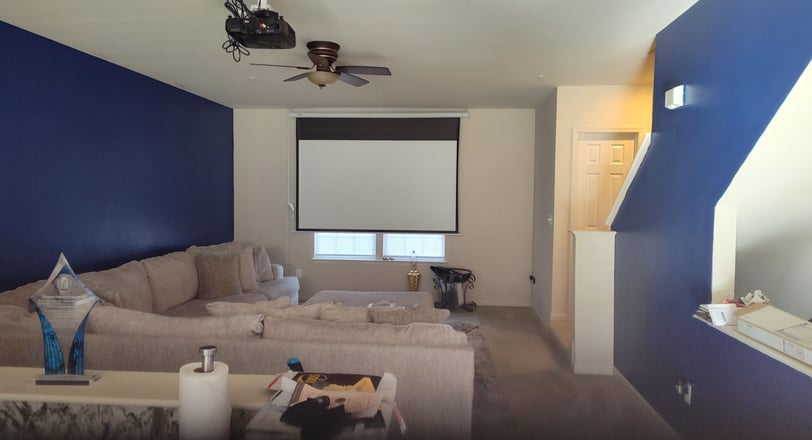

Introduction to the Project
The townhome project in the Wildwood community of California, MD, initiated as a response to pressing concerns regarding the property's condition. The homeowners faced a significant challenge after experiencing water damage from a pipe burst, which not only jeopardized the house's structural integrity but also compromised the aesthetics of the interior spaces. The urgency to address these issues prompted the homeowners to consider a comprehensive renovation, focusing on revitalizing their living environment.
Initially, the interior of the townhome reflected the aftermath of neglect, with peeling paint, water stains, and an overall drab atmosphere. The homeowners expressed their desire for a space that was not only attractive but also reflective of their personal taste and lifestyle. They sought a professional approach capable of transforming the interior into a welcoming and functional setting, in which they could comfortably host family gatherings and entertain guests.
This project was not merely about cosmetic improvements; it was rooted in the need for urgent repairs and reinstating the townhome's livability. Addressing the immediate concerns of water damage necessitated a careful selection of materials and techniques that would ensure long-lasting results. The homeowners envisioned a fresh palette, aiming for serene colors that would evoke comfort and tranquility. Together, they collaborated with design professionals to create a plan that would not only remedy the previous damage but also enhance the overall aesthetic appeal of the townhome.
The process began with evaluating the full extent of the renovations required. From assessing damages to selecting appropriate paint types and color schemes, every decision was carefully considered to ensure that the final outcome would reflect the homeowners' aspirations while adhering to the structural necessities stemming from the initial damage. This project ultimately represents a meaningful transformation from a damaged space to a rejuvenated home that exemplifies both style and comfort.
Understanding the Damage: Water Issues and Repairs
Water damage can significantly impact the structural and aesthetic integrity of a townhome, particularly within a three-story residence like those found in the Wildwood Community. In this case, the burst pipe led to extensive damage that necessitated careful assessment and considerable repairs before any cosmetic changes, such as painting, could be implemented. Initially, the rapid influx of water compromised the drywall, flooring, and insulation in multiple rooms, including the basement, main living areas, and bedrooms. The scope of the damage required a thorough remediation process to ensure a safe and livable space.
Addressing the plumbing issues was paramount. First, the leaking pipes were identified and repaired to prevent any further water intrusion. This involved replacing sections of the pipe that had succumbed to age or damage, thus restoring the water supply to its optimal condition. Additionally, we faced complications with freezing AC lines, which often occur in regions subjected to extreme temperature fluctuations. The malfunction not only hampered the home’s climate control but also contributed to excess moisture within the walls, necessitating the careful thawing and insulation of these lines to prevent similar incidents in the future.
Furthermore, the presence of clogged drains exacerbated the water issues throughout the townhome. Debris buildup and inadequate drainage were addressed through thorough cleaning and, in some cases, the replacement of plumbing fixtures. It is crucial to rectify these underlying problems prior to engaging in any cosmetic renovations, such as a fresh interior paint job. Without prioritizing these repairs, homeowners risk ongoing damage that can negate the effects of their improvement investments. Therefore, a proactive approach to plumbing and moisture issues lays a strong foundation for restoring and enhancing the townhome’s livability.
Drywall Repair and Preparation for Painting
Proper drywall repair and preparation are crucial steps in achieving a beautiful and lasting paint job, particularly in the context of a townhome renovation. The first stage involves a thorough assessment of any damage to the drywall. This assessment not only identifies visible holes or cracks but also uncovers underlying issues that may not be immediately apparent. It is essential to carefully examine the surrounding areas for moisture damage or structural integrity issues, as these can greatly impact the final outcome of the paint job.
Once the assessment is complete, the next phase entails either repairing or replacing the affected drywall sections. For minor damage, such as small holes or dents, a joint compound can be used to fill in the imperfections. The application of this compound should be done in thin layers, allowing each layer to dry and be sanded smooth before adding the next. For larger areas of damage, particularly those requiring a complete replacement, cutting out the affected section and installing a new piece of drywall is necessary. This ensures that the repair is not only visually appealing but also structurally sound.
After repairs are completed, preparing the walls for paint is the final step in this process. This includes sanding the repaired areas to create a seamless surface and removing any dust and debris that may interfere with paint adhesion. Additionally, applying a primer is advisable, especially in cases of significant repairs or when transitioning from a dark to a lighter color. Priming enhances the paint's durability and coverage, further contributing to a polished finish. The removal of any imperfections and the meticulous approach to preparing the drywall sets the foundation for a stunning transformation that highlights the beauty of the newly painted surfaces.
Choosing the Perfect Color Palette
When embarking on a transformative interior paint job, selecting the right color palette is a critical step in the process. The Wildwood Community townhome presented an opportunity to rejuvenate its interior spaces, and the decision was guided by the client’s preferences in tandem with current design trends. Initially, the client expressed a desire for a tranquil yet modern ambiance, feeling particularly drawn to shades that evoke calmness and serenity. This led the discussion toward selecting blues and muted neutrals, specifically opting for the subtle yet striking shades of blue and passive grey from Sherwin-Williams.
In collaboration with color experts, we explored various combinations, emphasizing how the interplay of these two colors could create a cohesive atmosphere throughout the home. The choice of a soft blue would infuse energy and freshness into living spaces, while passive grey would offer a perfect complement, grounding the overall aesthetic and providing a backdrop that enhances the blue’s vibrancy. Such combinations are essential in promoting a harmonious relationship between colors, which could positively influence the mood of those residing within.
Research shows that color can have a profound impact on one’s emotional and psychological state. Blues generally signify tranquility and peace, making them an ideal choice for spaces such as bedrooms and living rooms where relaxation is paramount. On the other hand, grey tones evoke sophistication and neutrality, enabling versatility in décor and contributing to a welcoming environment. By thoughtfully integrating these colors, the townhome's interior not only aligns with the client’s vision but also embraces the calming effects of color theory in interior design.
Applying the Paint: Techniques and Tips
Painting the interior of a townhome, especially one with three-story walls, requires a thoughtful approach to ensure a professional finish. The process begins with selecting the appropriate tools and materials. For large, flat surfaces, a high-quality roller in conjunction with a roller extension pole allows for easy coverage of broad areas. For detailed work around edges, ceilings, and corners, using a tapered brush is essential. A 2.5-inch angled brush provides the precision needed for these tight spaces, ensuring a clean line that complements the overall look.
Preparation is pivotal. Before the first stroke of paint, it is advisable to clean the walls with a mild detergent and water to remove any dust or grease that could interfere with adhesion. Next, applying painter's tape around windows, doors, and baseboards helps achieve clean, crisp edges. Using a primer is another recommended step, particularly when transitioning from dark to light colors or painting over previously uncoated surfaces, as it provides a uniform base that enhances the final color application.
When applying the paint, employing the “W” technique with a roller can help achieve an even coat. This involves making W-shaped strokes on the wall, which can cover larger areas smoothly without leaving roller marks. Paint should be applied in thin, even layers, allowing each coat to dry completely before applying the next. This method not only prevents drips but also results in a more durable finish. For extended areas or unique surfaces, consider using a paint sprayer, which can speed up the process while maintaining an even coverage.
Lastly, take note of the environmental conditions during the painting process. Ideal temperatures and humidity levels can greatly influence drying times and adhesion. By implementing these techniques and tips, homeowners can transform their townhome interiors with a stunning paint job that retains a professional appearance for years to come.
Final Touches: Completing the Transformation
Upon the successful completion of the interior painting in a Wildwood townhome, the next critical phase involves the addition of finishing touches that elevate the overall aesthetic and ambiance of the space. Decorative elements such as moldings, fixtures, and accent pieces play a significant role in crafting a cohesive and inviting environment. With the fresh coat of paint now setting the tone, the selection of these elements can either complement or contrast with the new color scheme, offering a personalized touch to the home.
Moldings, for instance, are often considered the crowning glory of a room. The addition of crown moldings along the top edges of the walls introduces a sophisticated flair, enhancing the height of the spaces and drawing the eye upwards. Similarly, chair rails and baseboards can help to delineate spaces, adding depth and character. When painted in a contrasting or harmonious color, these moldings can provide visual interest and serve as an elegant transition between different color applications.
The choice of fixtures, such as light switches and doorknobs, can further amplify the transformed look of the townhome. Opting for modern metallic finishes or vintage-inspired designs can add personality, while ensuring the hardware ties back into the overall theme of the home. Furthermore, thoughtfully selected accent pieces, including wall art, decorative pillows, and plants, can inject life and warmth into the newly painted areas. These elements not only bring in texture but also contribute to an inviting atmosphere, making the home feel lived-in and cherished.
The shifts in color palette and the integration of decorative accents transform the space into a welcoming haven, fostering a sense of comfort and belonging. This meticulous attention to detail ensures that the atmosphere is one that not only reflects the personal style of the homeowners but also enhances the overall appeal of the property.
Client's Feedback and Project Reflection
After the completion of the interior paint job in the Wildwood Community townhouse, the client's response was overwhelmingly positive. They expressed their excitement about the transformation, noting how the new colors and finishes revitalized the overall ambiance of their home. The client highlighted that the updated interior aligns perfectly with their vision, creating an inviting and harmonious atmosphere that reflects their personal style.
They specifically mentioned their satisfaction with the meticulous attention given to repairs prior to the painting process. This foundational work ensured a flawless finish and elevated the quality of the final outcome. The client was particularly pleased with the professionalism exhibited by the contractors throughout the project. Their commitment to maintaining clear communication and adhering to the agreed-upon timeline did not go unnoticed; this greatly contributed to the client's overall positive experience.
From the contractor's perspective, the project presented certain challenges that were successfully navigated. Initially, there were concerns regarding color selection and the intricacies involved in working within a space that had limited natural light. However, these challenges were effectively addressed through collaboration with the client, who provided valuable input and feedback during the decision-making process. The contractor learned the importance of flexibility and being receptive to clients' ideas, which ultimately led to a more satisfying outcome for both parties.
Moreover, the project served as a reminder of the significance of preparation and planning. Delaying the commencement of the painting until all repairs were completed ensured a smooth workflow, minimizing disruptions. This experience reinforced the notion that well-executed planning and open lines of communication are essential for a successful renovation. Overall, both the client and the contractor found the collaboration to be enriching, fostering a relationship built on trust and shared aspirations for creating a beautiful home.
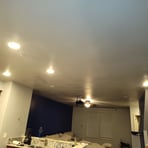
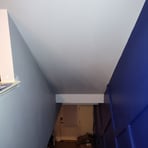
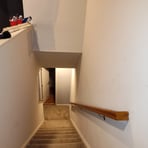
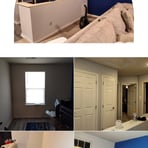

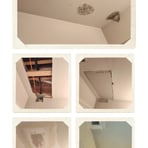
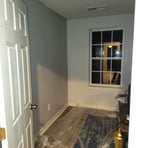
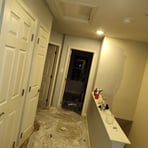
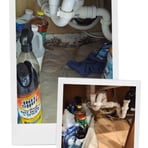
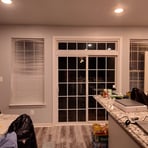


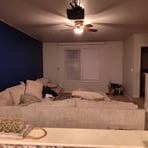
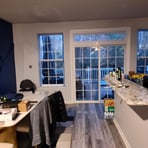

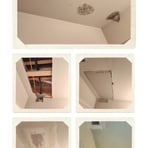
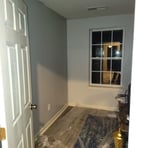
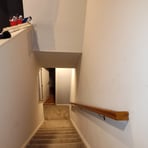
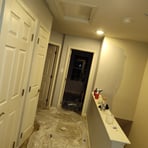

QUICK LINKS
Ready To Restore Your Property?
SUBSCRIBE
© 2024. All rights reserved.
CONTACT US NOW
FOLLOW US NOW




